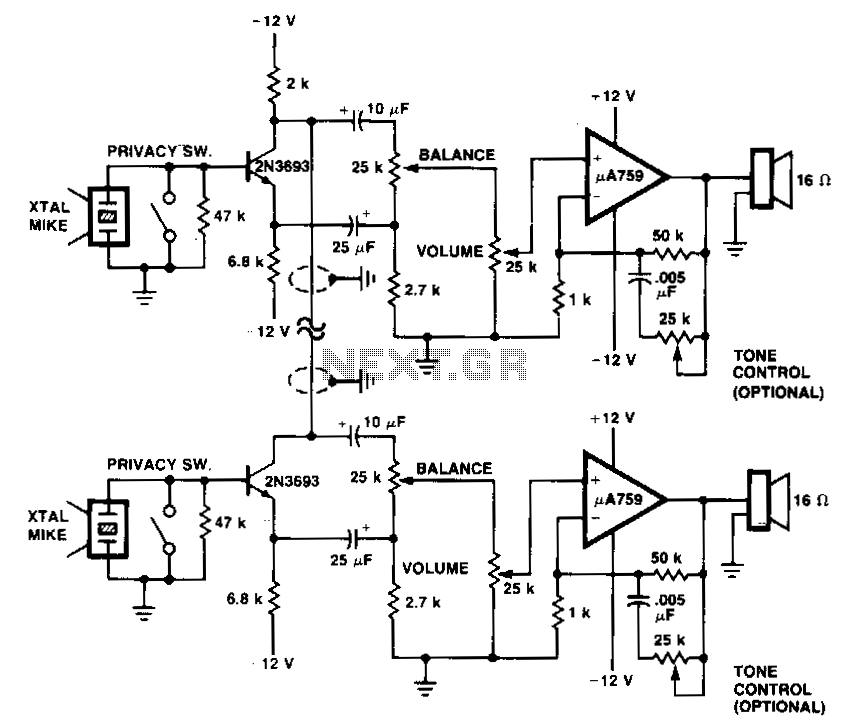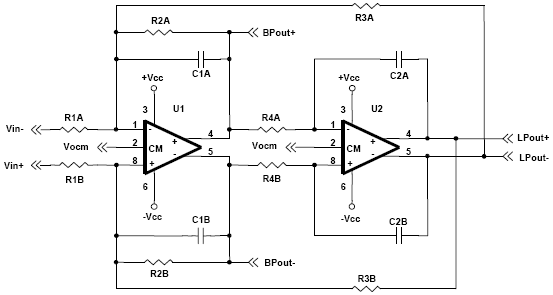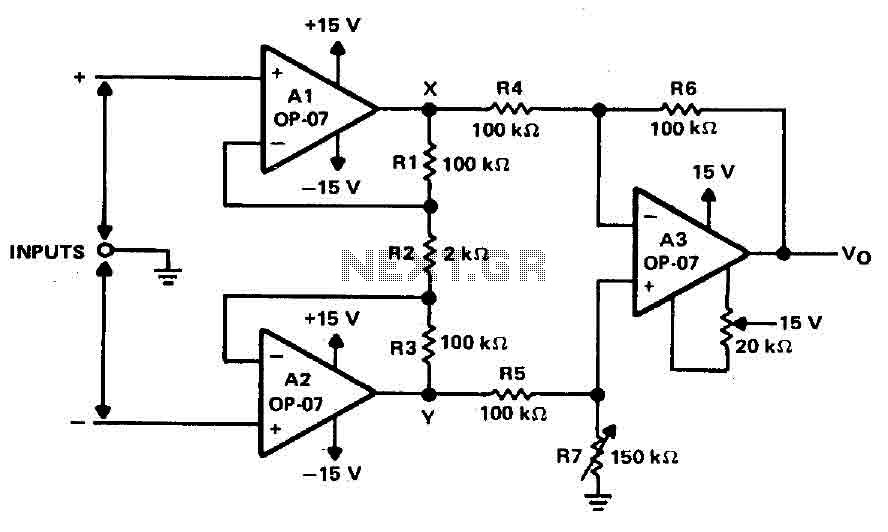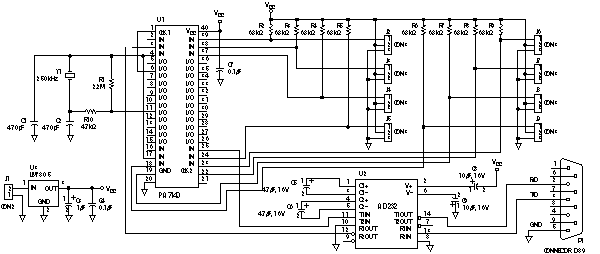
Bidirectional H-Bridge Monitoring with ADC-Friendly Differential Output
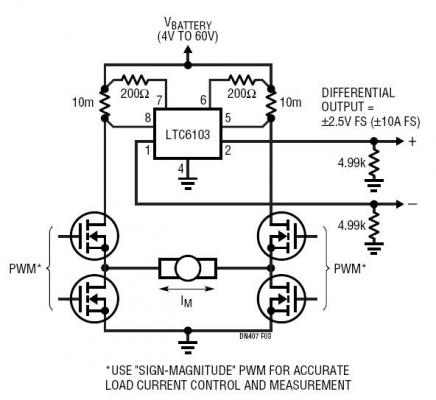
The dual outputs of the LTC6103 can be utilized independently for overload detection or combined as a differential pair to provide a bidirectional signal to an analog-to-digital converter (ADC). A typical circuit for a generic H-bridge application is illustrated. The power devices can consist of complementary MOSFETs, pure N-MOSFETs, or other switching devices. When the bridge drives a load, such as a motor in this example, one output of the LTC6103 rises above ground while the other is pulled down to ground, creating an accurate bidirectional differential output with a common mode voltage that does not drop below ground. The output resistance, specified as 4.99k in this case, can be adjusted to meet the source-impedance requirements of any ADC.
The LTC6103 is a precision current sense amplifier designed for high-performance applications. The device features dual outputs that can operate in a variety of configurations to suit specific application needs. In overload detection scenarios, each output can independently indicate when the current exceeds a predefined threshold, allowing for effective monitoring and protection of the system.
In H-bridge applications, which are commonly used for driving motors or other inductive loads, the LTC6103 can provide a robust solution for current sensing. The differential output configuration is particularly advantageous as it allows for noise immunity and improved accuracy in the presence of common-mode voltages. This is essential in motor control applications where high-frequency switching can introduce significant noise.
The choice of output resistance is critical in ensuring that the voltage levels at the ADC inputs are within the acceptable range for accurate digitization. The specified 4.99kΩ resistance can be modified based on the specific source impedance of the ADC being used, ensuring optimal performance across different system configurations.
In summary, the LTC6103 provides a versatile and precise solution for current sensing in various applications, with features that support both overload detection and bidirectional signaling to ADCs, making it an essential component in modern electronic designs.The dual outputs of the LTC6103 can be used individually to provide overload detection, and/or may be taken as a differential pair to provide a bidirectional signal to an analog-to-digital converter (ADC) for example. Figure 3 shows a typical circuit for a generic H-bridge application. The power devices may be complementary MOSFETs, pure N-MOSFETs , or other switching devices. When the bridge drives the load (a motor assumed in the example shown), one of the LTC6103 outputs rises above ground, while the other remains pulled down to ground, thereby forming an accurate bidirectional differential output with a common mode voltage that never falls below ground. The selection of output resistance (4. 99k in the example) can be scaled to satisfy the source-impedance requirement of any ADC. We aim to transmit more information by carrying articles. Please send us an E-mail to wanghuali@hqew. net within 15 days if we are involved in the problems of article content, copyright or other problems.
We will delete it soon. 🔗 External reference
The LTC6103 is a precision current sense amplifier designed for high-performance applications. The device features dual outputs that can operate in a variety of configurations to suit specific application needs. In overload detection scenarios, each output can independently indicate when the current exceeds a predefined threshold, allowing for effective monitoring and protection of the system.
In H-bridge applications, which are commonly used for driving motors or other inductive loads, the LTC6103 can provide a robust solution for current sensing. The differential output configuration is particularly advantageous as it allows for noise immunity and improved accuracy in the presence of common-mode voltages. This is essential in motor control applications where high-frequency switching can introduce significant noise.
The choice of output resistance is critical in ensuring that the voltage levels at the ADC inputs are within the acceptable range for accurate digitization. The specified 4.99kΩ resistance can be modified based on the specific source impedance of the ADC being used, ensuring optimal performance across different system configurations.
In summary, the LTC6103 provides a versatile and precise solution for current sensing in various applications, with features that support both overload detection and bidirectional signaling to ADCs, making it an essential component in modern electronic designs.The dual outputs of the LTC6103 can be used individually to provide overload detection, and/or may be taken as a differential pair to provide a bidirectional signal to an analog-to-digital converter (ADC) for example. Figure 3 shows a typical circuit for a generic H-bridge application. The power devices may be complementary MOSFETs, pure N-MOSFETs , or other switching devices. When the bridge drives the load (a motor assumed in the example shown), one of the LTC6103 outputs rises above ground, while the other remains pulled down to ground, thereby forming an accurate bidirectional differential output with a common mode voltage that never falls below ground. The selection of output resistance (4. 99k in the example) can be scaled to satisfy the source-impedance requirement of any ADC. We aim to transmit more information by carrying articles. Please send us an E-mail to wanghuali@hqew. net within 15 days if we are involved in the problems of article content, copyright or other problems.
We will delete it soon. 🔗 External reference


